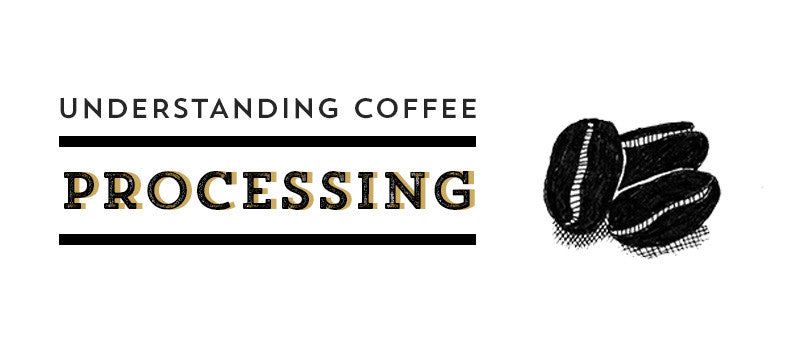
By Ffion Davies.
The speciality coffee industry is passionate about promoting traceability, transparency and ethical sourcing, and therefore places a huge emphasis on origin. It often provides a wealth of information to its consumers; from details of its producer and farm, to the altitude in which the coffee was grown. It's a huge privilege to have access to these details, and understanding them really can transform your coffee-drinking experience.
However, as someone who is new to the speciality coffee industry, I understand that it's sometimes difficult to know exactly how to interpret and utilise all of the information given on the back of a bag of coffee...
...This blog entry aims to make sense of some of that information!
It turns out that there are a number of things that we should be looking for when purchasing coffee. One of the most important things is the way in which the coffee has been processed at origin.
We can gauge a lot from the way a coffee has been processed, including its quality, value, and social implications. There are a number of processing methods available to farmers, and some require a lot more investment than others. These factors can have a dramatic effect on your resulting cup of coffee.
Here I offer a brief explanation of each process:
1) The Natural/Dry Process
If your coffee is naturally processed, it means that the coffee cherries have been spread out in a thin layer on raised tables and patios to dry after harvesting. Once the fruits have dried out (a little like grapes to raisins), the outer layer of skin is removed from each bean mechanically. The natural process is commonplace in some African countries, where there is limited access to water, and is often the only option available to the producer.
Although straight-forward, this method is excruciatingly labour intensive. In order to encourage better airflow and avoid fermentation, the drying coffee cherries must be turned regularly. If the fruit is not watched carefully, there is a high risk of mould and rotting.
While this method may generally be associated with low quality coffee, there are many who believe that it showcases an exciting potential in flavour. Naturally processed coffees are often fruitier, and are described as having undertones of strawberry, blueberry and tropical fruit.
2) The Washed Process
Unlike naturally processed coffee, the aim of the washed process is to remove all of the flesh from the coffee seed before it is dried. Removing the sticky flesh at this stage drastically reduces the risk of defects in the coffee, making it more valuable.
After harvesting, coffee cherries are put through a machine called a depulper, where most of the flesh is stripped off the bean. The coffee is then put into a water tank where the remainder of the flesh is removed by fermentation. After fermentation, the coffee is washed again to remove any leftover debris, and is then sun-dried on raised drying platforms. Like the natural process, the beans must be turned regularly to ensure that they do not become mouldy.
In comparison to other processes, wet-processed coffees are often described as more acidic and complex. Washed coffees tend to lead to a cleaner-tasting end product, and are usually more expensive because of the equipment and labour involved in their production.
3) The Pulped Natural Process
The idea behind this hybrid process is to produce coffees with a similar high cup quality to the washed process, but with less water. The pulped natural process is mainly used in Brazil.
Like the washed process, coffee cherries are mechanically depulped after harvesting. However, from here they are taken straight out to dry on patios where they are left under careful supervision and are turned regularly. Having less flesh surrounding the bean means that the risk of defects decreases significantly, and yet there is still enough sugar in the fruit to encourage sweetness and body in the resulting cup of coffee.
This process is very similar to The Honey (Miel) Process that is widely used in many Central American countries. Here, even less water is used and a specific percentage of flesh is left on the green beans.
4) The Semi-Washed/Wet-Hulled Process
Semi-washed coffee is a popular method in Indonesia, where it is harvested, depulped, and then partially dried. It is then hulled*, stripping off the parchment and exposing the green coffee bean underneath. The beans are then dried for a second time until they have a moisture content of around 11%. This routine gives the beans a distinctive swamp-green colour and some unusual characteristics.
This process is renowned for giving an end product of lower acidity and fuller body. Semi-washed coffees are often described as earthy and woody, with tobacco and leathery undertones.
*Hulling is a process which aims to remove the layer of parchment from the coffee bean (see diagram below). The beans are put into a dry mill, and are then graded before they are shipped off to be roasted. The semi-washed process is the only process that addresses the parchment in an earlier stage of production.
Illustrations by Bronwen Bender. Visit her website
here.

 By Ffion Davies.
By Ffion Davies.




 By Ffion Davies.
By Ffion Davies.
